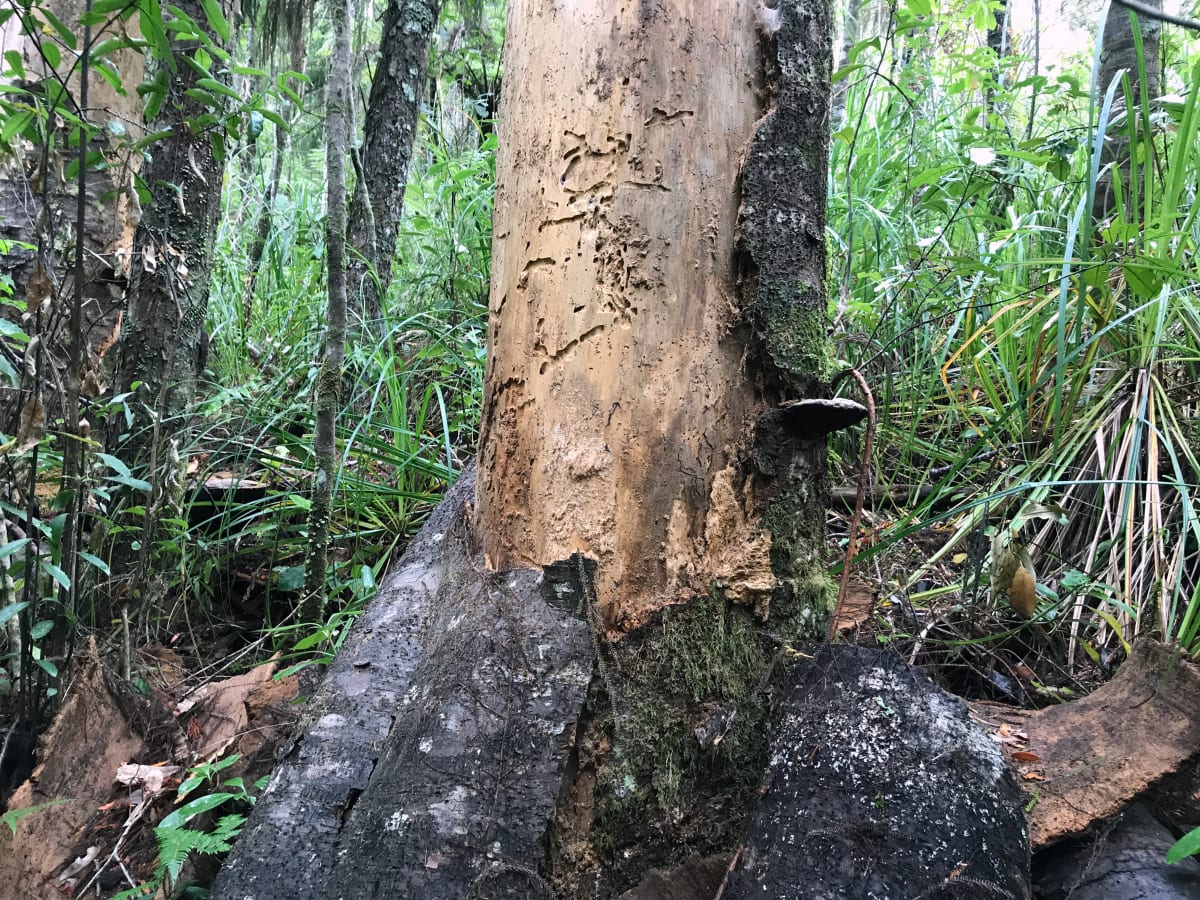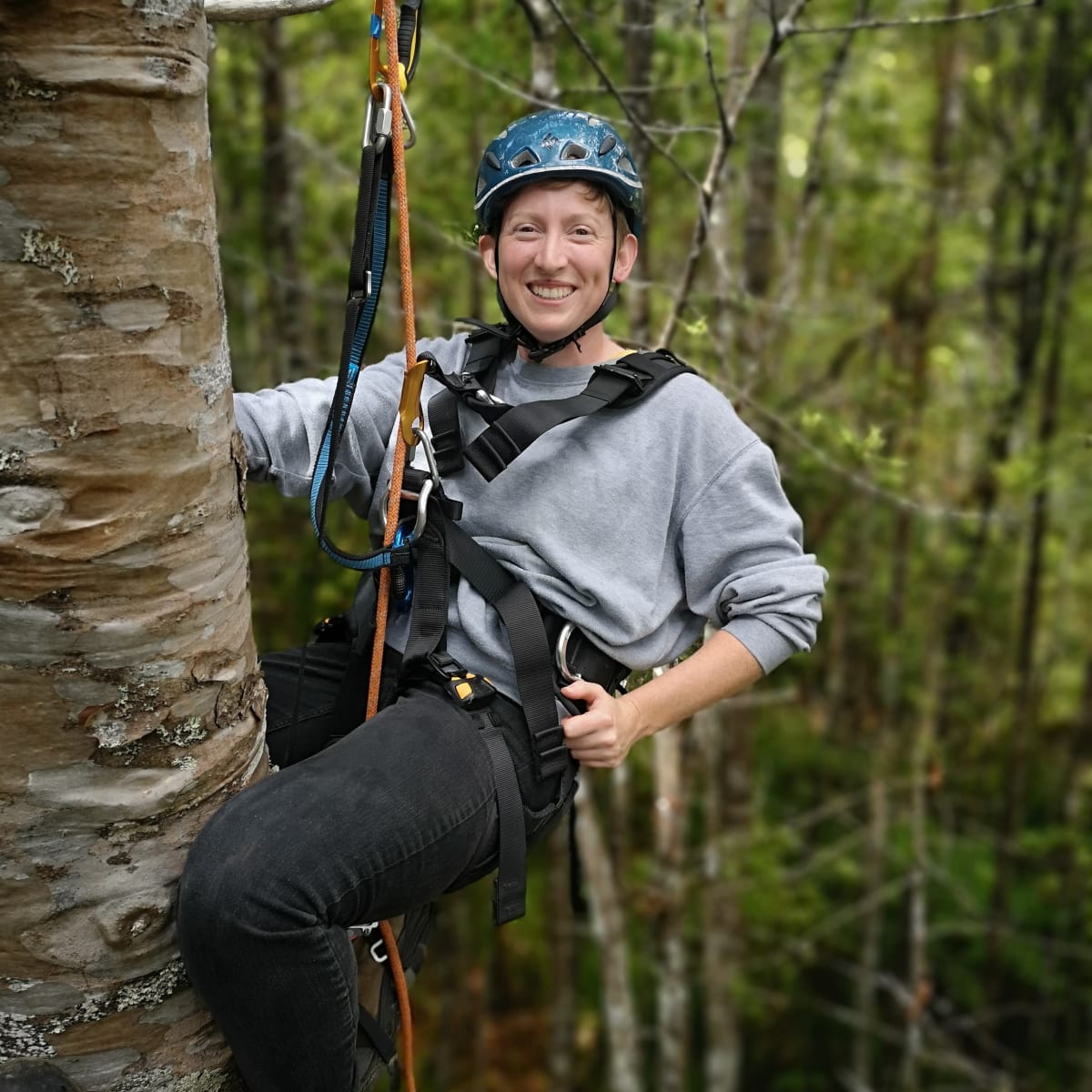With so little known about kauri dieback, finding answers is a bit like solving a game of cluedo to uncover the who, where, when and how. One PhD student is focusing on the question of how the disease kills.
In the depths of a stand of sick kauri North of Auckland, wires, probes and data-loggers are helping to answer an elusive question.
“Kauri dieback is caused by Phytophthora agathidicida, we know that, but we don’t know how it kills the trees.”
University of Auckland PhD student Sarah Killick’s work may give clues to what’s happening inside the trees and inform treatment decisions on what could help them survive the pathogen, instead of succumbing to it.
She said there are currently two schools of thought around how the fungal pathogen that moves through soil is killing the trees. One is that it disrupts the water flow in the trees, the other is that it disrupts the food flow.
Once infected, it’s thought the trees either die of thirst, starve to death, or both.
Her woody patients are on a farm north of Auckland. For tree lovers this forest is a grim sight. The surrounding bush is dotted with white skeletons of dead kauri, others are not far from death. Some trees have sparse leaves, others are in the process of sloughing off their protective bark, many are bleeding.
Killick explains Kauri bleed easily, the unpleasant weeping lesions she believes are what happens when the phloem – the tissue that transports sap – gets disrupted.
“The pathogen goes up the tree and it’s likely this is a defence response to all the damage which is happening in the phloem. The tree starts bleeding and pushes it out.”
Currently there is no cure for kauri dieback.

Killick’s chosen a range of living trees in the farm forest to monitor.
“It’s kind of like how a doctor might record a patient’s vitals to monitor their health. I’m doing the same with the trees. I’m just taking ongoing measurements and seeing the water relations in particular, just to see how they’re faring in comparison to healthy kauri.”
Her probes collect data from the trees and soil every 15 minutes. If the soil is full of moisture, but infected trees aren’t sucking it up and transporting it, it’s a sign there’s an issue. This data is stored in a data logger and downloaded every two weeks by Killick when she changes the data-loggers’ batteries. It’s an expensive enterprise and she’s grateful for Auckland Council funding, which has helped purchase the batteries and data-loggers needed for the study.
The day Newsroom visited the study site, it wasn’t just a battery change and data download day. Arborists were high in the canopy taking yet more vital signs from Killick’s patients.
The arborists were measuring how the trees are photosynthesising with a special device that measures carbon dioxide in the leaves. Sprigs of leaves are also sent down to a team on the ground who are measuring the water content of them through the day. Here the leaves are put under pressure in a special ‘pressure bomb’ device until sap emerges from the stem.
“It’s like a wet dishcloth. If it’s really wet there’s no trouble at all to get water out of it. If it’s dry you have to squeeze it really hard.”

As well as collecting samples from sick trees, she’s also collecting data from a stand of trees on the same farm that have all been treated with phosphite. A third group of healthy trees she’s sampling is from a different area but are growing in similar, but disease-free, soil. When the study is complete she’ll be able to compare the vital signs of sick trees with treated trees and healthy trees.
“I hope that by understanding how the Phytophthora is killing the trees, particularly which areas of the trees are affected, we’ll be able to target the treatment more specifically, because right now we’re using phosphite treatment.”
Phosphite has been shown to work temporarily but as Killick points out it’s not a cure and “we don’t really know how it works either”.
It’s just another of the many open questions relating to the disease.
Killick’s research still has some way to go and she wants to collect data from the field site for at least a year.
She’ll also soon be conducting a greenhouse-based project at Plant & Food Research with 80 seedlings. As seedlings only live for four to six weeks once they have the disease, results from this study will be able to be analysed quickly.
She’s been taking sneak peeks at data that has already been gathered at the farm forest and said there were indications water was an issue, but more data collection was needed before any conclusions could be made.
“You hope to get some good news out of it but it’s a bit sad in the meantime, especially seeing the trees all around my forest die.”



